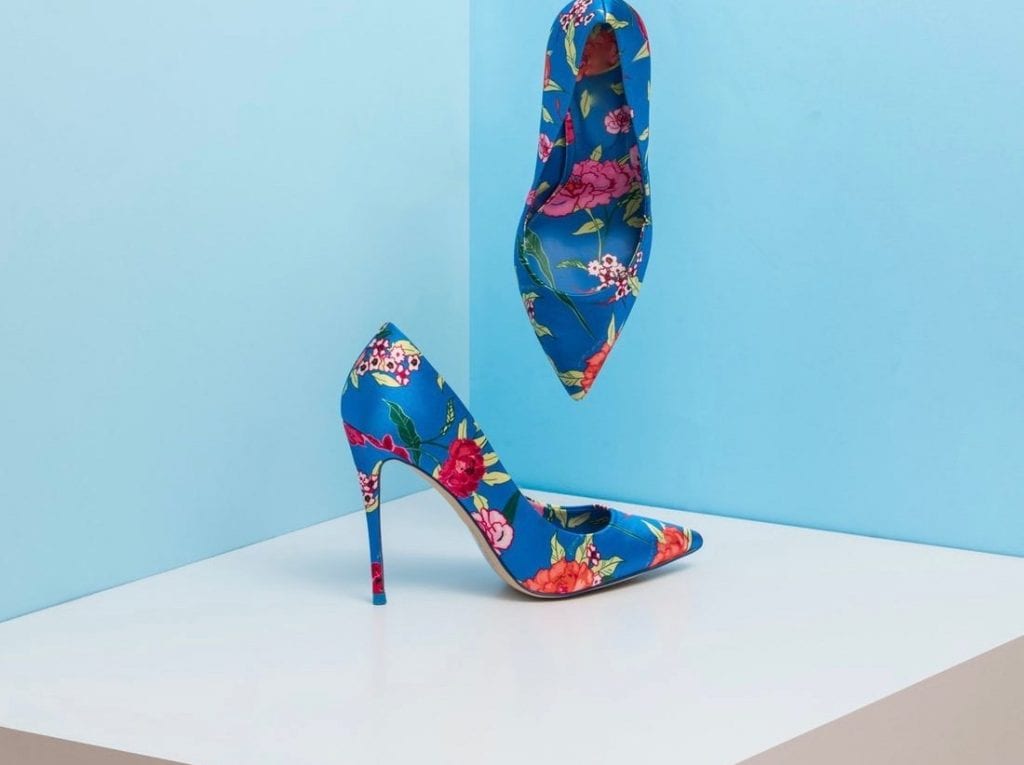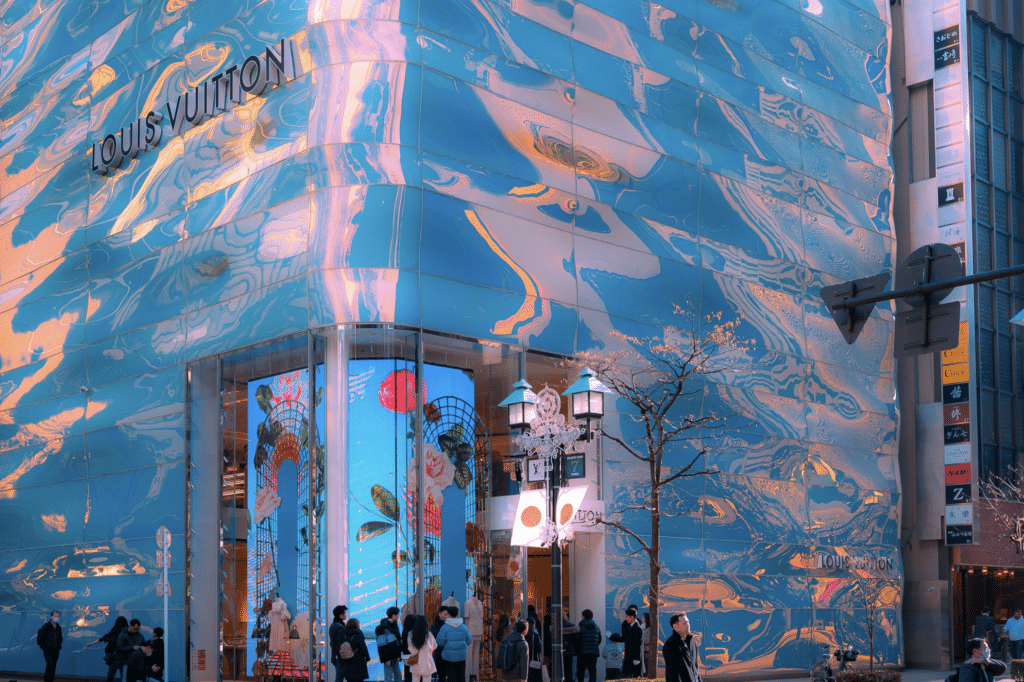In February 2019, Payless ShoeSource filed for bankruptcy for a second time. It was 63 years after the mall-centric footwear chain first got its start in Topeka, Kansas, which was, in 1956, in the midst of national attention after the Supreme Court handed down its decision in Brown v. Board of Education of Topeka – the landmark case establishing racial segregation in public schools are unconstitutional – less than two years prior. Founded by cousins Louis and Shaol Pozez, Payless, or what was first known as Pay-Less National, was something of a novelty in the market. While most shoe stores were full service at the time, the Pozez’s imagined something else. They wanted to offer low cost footwear in a self-service environment.
The appeal of Payless was quick to catch on, and within just a handful of years, the company went public and embarked on a campaign of national expansion. The Pozez’s three stores in Topeka – which were free of any upscale retail frills, a move that enabled the brothers to keep costs low for themselves and consumers, alike – turned into almost 40 by 1969, with outposts in Oklahoma, Texas, and Nebraska.
Aside from the draw of affordable footwear (particularly for growing baby boomer families), at least some of the company’s initial growth was fueled by a budding social movement to “casualize” in the 1950s – which saw wardrobe changes coming in the form of slightly less formal dress codes at certain offices. This also extended to the clothing that individuals would wear to restaurants and movies, as well as for traveling. These budding cultural changes enabled Payless to rake in $75 million in sales annually by the mid-1970s, up from less than $10 million per year not even a decade prior, all while it rapidly expanded by opening its own stores and bringing other footwear chains under its ownership umbrella.
It also did not hurt, of course, that many of its outposts would come to be located in shopping malls, which by 1975, accounted for 33 percent of all retail sales in America, thereby, helping to boost “the company’s brand recognition,” according to Business Insider. With growing name recognition, annual sales followed suit. By the 1979, Pay-Less National – which was publicly traded as Volume Distributors – had more than 700 stores across the U.S., per BI, and was generating some $191 million in annual sales.
Looking beyond cultural changes and prime locations, the core strength of the company was the shoes, themselves. “The company managed to commission the manufacture of millions of pairs of shoes, often imitating the look of more fashionable brands; ship them from factories [overseas] to distribution centers in the United States; and then, just in time, get those shoes into the stores where they would most appeal to the customer base,” as the New York Times put it early this year. “It did all this at remarkably low cost.”
In a testament to its ability to provide private label footwear that looked just like other brands’ offerings for a fraction of the cost, Payless found itself ensnared in infringement litigation over the years with adidas, American Eagle Outfitters, Asics, K-Swiss, Reebok, and Brooks Sports, among others. At the same time, it managed to launch collaboration collections with Christian Siriano, Kendall and Kylie Jenner, Alice + Olivia, and Jeff Staple x Airwalk to further boost its appeal among a wider audience.
A $2 Billion Acquisiton
“By the time a private equity group led by Golden Gate Capital and Blum Capital took over the company” – which had been rebranded as Payless ShoeSource in 1991 – by way of “a $2 billion acquisition in 2012, Payless had 4,300 stores worldwide and $2.4 billion in revenue,” the Times reported. Even with such successes in hand, the retail giant – which called itself “the largest specialty family footwear retailer in the Western Hemisphere” – was facing “profound challenges.”
For instance, “Many malls and shopping centers were entering a death spiral, with falling foot traffic, store closings and underinvestment,” the Times’ Neil Irwin noted. “People were increasingly buying shoes online, along with most everything else. Payless had underinvested in its information technology infrastructure.”
“What needed doing was evident to Payless’s own managers and outside analysts alike: shutter underperforming stores, update others, and modernize its technology to compete in the digital age.”
But beyond those issues, which have plagued no shortage of similarly-situated retailers as consumers look online and all but abandon the mall, Payless’ problems would soon run deeper: “the company [was making] huge payments to its private equity owners,” per Irwin, so much so that “for every dollar that came in the door of the company in that span, it paid out $1.09 to its owners and 26 cents to its lenders.” That means that “the company [had] less of a financial cushion to ride out any future challenges.”
Bankruptcy Times Two
Those challenges – which did, in fact, come into fruition in a number of forms – pushed Payless over the edge. In a Chapter 11 bankruptcy filing in April 2017, the footwear chain listed liabilities of between $1 billion to $10 billion, and assets of roughly $500 million to $1 billion. It put forth a plan to immediately close about 400 underperforming stores in the U.S. and Puerto Rico, what W. Paul Jones characterized as “a difficult, but necessary, decision driven by the continued challenges of the retail environment, which will only intensify.”
While its filing was hardly an outlier, it was the tenth major retailer to file for Chapter 11 by February of that year, analysts pointed to the fact that its “parent company was purchased by private equity firms in 2012 for $2 billion,” leaving the company saddled with debt. And just two months prior to the filing, Moody’s downgraded its outlook on the company, stating that it showed “weaker than anticipated operating performance.”
Despite such a gloomy outlook, by that August, just four months after it first filed for bankruptcy, Payless emerged a lighter, leaner operation. “Payless’ emergence essentially gives the company a do-over after disposing of half of $847 million of debt it had built up under its private-equity ownership,” Reuters reported in 2017. “With a cleaned-up balance sheet, Payless is seeking to position itself to compete in a tight U.S. market, open more stores across Latin America – a major part of its growth strategy – and develop new franchises in Asia.”
Some parties were optimistic about Payless’ future. Retail restructuring expert Christopher Jarvinen of law firm Berger Singerman told Reuters that the company – under the control of Alden Global Capital – “has a business plan with a future.” Others, however, were skeptical. “The company’s troubled past and the competitive retail environment still will leave little wiggle room for negative surprises,” turnaround specialists told the publication.
The latter camp would prove to be right. After first filing for bankruptcy in April 2017, Payless filed for Chapter 11 protection again in February 2019, and revealed that it would shutter its domestic business entirely. While Payless ultimately closed its 2,300 U.S. stores and shuttered its corresponding e-commerce operations, a spokesman for the company stated that the bankruptcy “does not affect the company’s franchise operations or its Latin American stores, which remain open for business as usual.”
All in all, Stephen Marotta, who was named as the company’s chief restructuring officer to prepare for the bankruptcy, told CNN that “Payless had too much debt, too many stores, and too much corporate overhead when it emerged from the earlier bankruptcy.” The company also pointed to “a computer system issue that hurt its 2018 back-to-school sales” and its carrying of “too much inventory for the holiday season, which forced it to cut prices.” This culminated in a $63 million loss for the company’s North American business for the 2018 fiscal year.
Payless emerged from its second Chapter 11 bankruptcy – or what has been coined a “Chapter 22” bankruptcy for second-time Chapter 11 filers – in January, and has been off of the map, in the U.S., at least ever since. Given the disastrous state of domestic retail in light of increasing competition from the likes of Amazon and the enduring impact of the COVID-19 pandemic, which has given rise to more bankruptcies so far this year than each single year since 2011, it seemed as though it would stay that way.
That is, until this week, when Payless revealed that it will try its hand for a third time.
Third Time Around?
Complete with yet another rebrand (the company is now called Payless Worldwide), Payless is relaunching its website this week, and plans to open as many as 400 stores in North America over the next five years. The first location is going to be a flagship in Miami, which is slated to open its doors this fall.
In a statement on Monday, new CEO Jared Margolis said that “starting from scratch puts us in a good position.” The WSJ notes that while Payless’ shoes “will still be inexpensive—an average pair costs just $19.99, Margolis, who comes from a marketing background, wants to do a better job of building the brand.” He told the Wall Street Journal that Payless – which is not under the control of “a group of investors led by hedge fund Alden Global Capital and investment advisory firm Axar Capital Management, two of its lenders” – “never did a great job of educating consumers about its products. These are inexpensive shoes, but that doesn’t mean we can’t create a cool, fun experience.’
In its absence, Payless is expected to have lost its more than 60 million customers to the likes of Walmart, Target and Amazon. It is hoping to lure them back with its same low prices, a new e-commerce site, and offerings from major brands like AirWalk, American Eagle, K-Swiss, Kendall + Kylie and Aerosoles.
As for the timing of it all, Margolis says, “We are fully aware that we’re relaunching in a time when many have lost their jobs, finances are tight, and parents nationwide are adjusting to working from home and facilitating at-home schooling for their children.” Nonetheless, “We saw an opportunity for the brand to relaunch into the U.S. market, providing our community with the affordable, value-driven products they’ve always searched for.”











